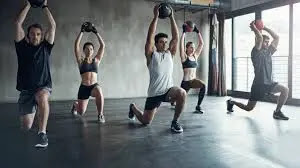Keys To Understanding Functional Movement
When we work out, we use our arms and legs in certain patterns and routines. They don’t usually reflect moves we make in ordinary life like cleaning, cooking, chasing after children, or working in an office.
These moves seem completely removed from normal life, but they aren’t really. Many of the motions used in modern classes are designed to improve our functional movement.
What Is Functional Movement?
An organization has been started to pursue this idea more fully, and physiotherapists focus on this same theme. Functional movement is a catalog of moves an ordinary person makes day by day to scratch their backs, lift things up from the ground, reach for items on shelves, and turn around to complete a shoulder check in the car.
That catalog includes walking, running, getting in and out of bed, bending, and so on. As we get older, many functional movements become more difficult. We are not as limber as we used to be. Injury, poor muscle and bone development, illness, and being overweight also impede movement in all areas of life at any age.
Gauging Functionality
A system of checks has been established by the founders of the society for Functional Movement Screening, or FMS, in which they evaluate individual movement. Even among ostensibly healthy, fit individuals, these moves might be out of alignment or off-balance. Practitioners create a chart that allows the participant to see problems with movement.
If the alignment is not corrected, this could cause pain later on. A physiotherapist might suggest exercises to improve functional health. A chiropractor might make adjustments to realign the spine. These little problems can even cause major problems leading to major injury or requiring surgery to a hip or a knee. One does not need to be 70 for this to take place; even men and women in their 30s and 40s suffer.
Exercising for Functional Movement
Although it is possible to cause problems with poorly aligned movement, choosing not to exercise will do more harm than anything else. Opt for athletics that encourage a full range of motion. Martial arts are excellent for this as patterns require pivoting, elongating arms, core strength and posture for proper stances, and kicking elongates leg muscles.
Yoga is another, gentler type of exercise that promotes strength and length. Balance is important to both, and in order to achieve balance one must protect back and stomach muscles: the core. Strength in this area will promote a healthy spinal system throughout one’s life and help to prevent incorrect movements which cause strain on the back and neck. Swimming is a way to improve upper body strength without placing strain on the lower body if this is an issue. Pilates gently uses one’s own body weight to promote strength and a full range of motion at the same time.
Tags
Health
